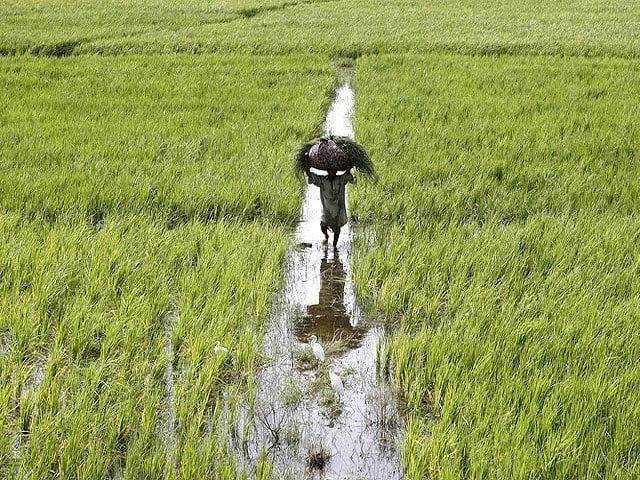
Contrary to popular belief, agriculture officials believe the current rain spell has been more useful than harmful to the vital wheat harvest.
The recent spells of rains will have salutary impacts on wheat, but it may be harmful for gram crop due to increase of moisture in the air, said a spokesman for the Agriculture Department on Saturday.
He added that rain would be beneficial for standing crops of wheat, Barseem and fodder, etc., especially in arid areas.
He said that the crops especially in arid areas had dire need of rain and the farmers' community was lucky that they had received rain spells in-time.
It would not only increase per acre yield but also enhance the overall wheat output in the country. However, the rain had also increased moisture in the air which might cause suspension of chlorophyll system of the gram plants that would result out attack of "Jhulsao" disease on leaves of the crop.
Therefore, the gram growers should be careful and take appropriate measures in consultation with agriculture experts to save their gram crops from damage, he added.
The official says that the lowering of temperatures in March because of the ongoing rains will help the grain develop further against its shriveling, as was witnessed during the same month last year due to heat stress.
He says that the wet spell, which is likely to continue for a couple of days, will also benefit the crop in rain-fed areas of the province that had been suffering from dry season for the last couple of years.
Both these factors, he claims, will make up for the losses to be suffered because of the lodging of the crop in some areas.
Farmers, however, are wary of the change in the meteorological calendar as erratic rainfall patterns, both temporally and spatially, are forcing a change in crop patterns.
Temperatures rise earlier in the year, while rains come unexpectedly causing damage to standing or harvested crops. Short but intense winters are stunting the growth and reducing the yield of winter crops, including wheat.
The difference between maximum and minimum temperatures in a 24-hours cycle creates an ambient environment for insects to flourish. There has been a surge in pest attacks, besides outbreaks of many fungal and bacterial plant diseases.
Apart from ending a four-month drought in the country, the current spell also delighted farmers, especially those in barani (rain-fed) areas, as it provided water to the gram crop.
Agriculture planners though see very positive effects on wheat, they are not ready to commit the extent of the impact. They are, however, certain that very important gram crop that has hit flowering stage and desperately needed one watering, will now largely escape the drought effects. The Punjab, they expect, may now be able to achieve its gram target.
The biggest beneficiary of the rain is rain-fed areas. The moisture could help the farmers in these areas sow groundnuts in mid-March. The official says if there is another rain spell, say by the end of the month, the farmers in rain-fed areas would recover financially.
The official, however, showed optimism about the wheat crop, saying that all agronomical signs - use of fertilizers and weedicide - about the crop had been positive, apart from water. The current rain spell mitigated these effects to varying degrees in various areas. The overall impact, he said, remained positive.























COMMENTS
Comments are moderated and generally will be posted if they are on-topic and not abusive.
For more information, please see our Comments FAQ